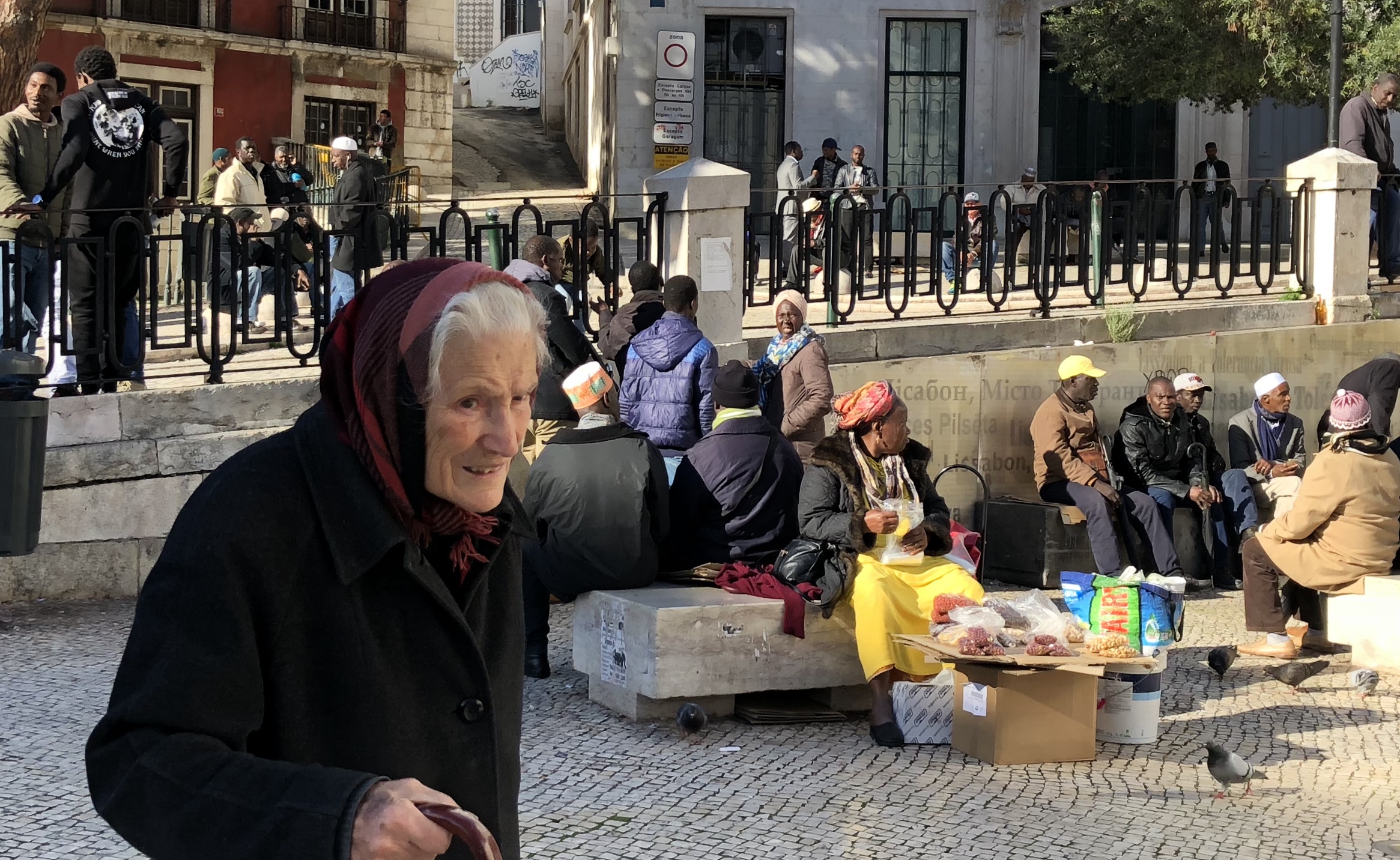
Lisbon is a haunting city. It is misty, caught in the process of decadence; its ambiance suggests a city that people long to hold onto yet haven’t been able to. You feel the old grandeur of gracious villas, private palaces, 18th century buildings. The narrow blue tiled apartment buildings trace the fate of the wealthy seafaring country, globalizers whose cinnamon, elephants, Brazilian music is intertwined. The empire was badly lost over a century ago and the poor country of Europe recently plunged into depression.
Lisbon is holding onto its history, tints and traces although much of the city was lost in the Great Lisbon earthquake in 1755. This is at odds with the European trend of erasure. Fado is the music of what was; what was lost at sea, left behind, left in the unknown and ungraspable. In a small tavern, the singer accompanied by a master of Portuguese guitar, it all makes sense. The stunning church of São Domingos is like Pompeii, its grandeur mottled and gnawed away at, an eloquent sign of earthquake, fire and beauty. The centuries meet not as strangers but in active dialogue.
Now the last unreconstructed capital of Europe has a skyline of construction birds. It also has superb modern art museum, the Berardo Collection, and an edgy avant-garde that pushes off from tight tradition. The in-betweenness makes it a place of spontaneous giving.




Lovely – the photo of the old woman with the immigrants behind her really speak to the fracture that is Europe today… How do they co-exist other than in the split second of the picture frame? If only there were easy answers to this question and people could just throw open their arms all around!
Beautifully said, Pamela. The split second of the picture frame is quite right. Parts of Lisbon reminded me of old medieval city where worlds were haphazardly superimposed, rather than well-separated. Maybe that will be the new urban model. Whether anyone will embrace it is another question. Thanks for your comment.